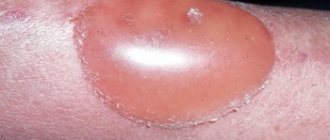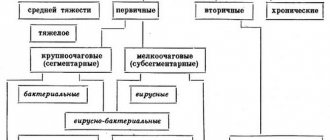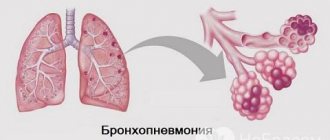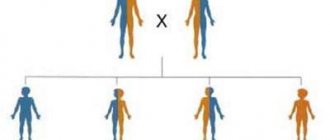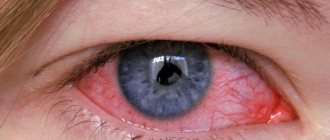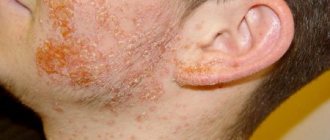Features of the disease
Follicular tonsillitis is an acute inflammatory process that involves various groups of tonsils that are part of the lymphopharyngeal system.
Inflammation affects not only the mucous membrane of the tonsils, but also their follicles located deeper.
The affected tonsils swell, increase in size, and clearly defined white ulcers form , which grow over time and merge with each other, forming a purulent abscess. The appearance of such ulcers is considered the main distinguishing feature of this type of disease.
Pathology can develop as an independent (primary) disease, however, most often follicular tonsillitis manifests itself as a consequence of other infectious diseases occurring in the body (for example, diphtheria ).
Sore throat in children, and what it is like
Sore throat is a rather insidious disease. At first glance, it may seem that there is nothing wrong with a red throat. But when talking about streptococcal sore throat, doctors first of all think about complications.
Modern classification divides sore throats into:
- primary;
- secondary.
Primary are tonsillitis, observed when the tonsils are affected, when the causative agent of the disease enters the mucous membrane, passes through all the protective barriers and begins to multiply in the lacunae.
In 80% of cases, the cause of such sore throats is group A b-hemolytic streptococcus.
Secondary tonsillitis occurs in other infectious diseases, such as infectious mononucleosis, measles, and diphtheria. They also accompany non-infectious diseases such as leukemia and agranulocytosis.
There are authors who believe that the term “angina” can only mean streptococcal sore throat. In other cases, the diagnosis should be tonsillitis.
Pathogens and routes of infection
The causative agent of the disease is considered to be bacterial microorganisms .
The most common among them is streptococcus. Less commonly, the root cause of the development of follicular tonsillitis are staphylococci, pneumococci and other bacteria.
You can become infected through direct contact with a carrier of the virus (airborne droplet method), or through the use of common household items, for example, utensils ( contact household utensils ).
However, the most common method of infection is internal, that is, when a child already has foci of infection in the body in the form of some infectious diseases that occur in a chronic form (untreated caries, inflammation of the sinuses, ears).
There are cases when pathogenic microorganisms - pathogens - are already present in the baby's tonsils (this situation is observed in chronic tonsillitis), in this case, even with a slight negative effect on the body, the child gets sick.
The incubation period for follicular tonsillitis usually lasts no more than 24 hours, since the disease is severe and its clinical manifestations develop rapidly.
What is viral sore throat? Find out the answer right now.
What can a sore throat be confused with?
There is a disease very similar, especially at the beginning, to streptococcal sore throat. This is infectious mononucleosis.
It begins acutely, children become lethargic, have a sore throat, plaque on the tonsils, enlarged lymph nodes, and children refuse to eat. This disease is especially difficult for young children. In the first days of the disease there is not always a runny nose; it may appear later.
Usually, in both diseases, the body temperature in the first days of the disease is very high and difficult to reduce. Often the fact of temperature terrifies mothers.
Don’t give in to panic, give antipyretics, monitor the child’s condition. But pay attention! If you have a sore throat, but no temperature, perhaps the cause is not streptococcus, but a virus. Not necessarily a mononucleosis virus, it can be an adenovirus or an enterovirus.
In our turbulent times, there may be isolated cases of diphtheria. This disease is serious and rare, but if the child is lethargic and weak, cannot get out of bed, and the weakness intensifies, plaques grow beyond the tonsils, you need to pay attention to this.
Causes
The root cause of the development of follicular tonsillitis is the penetration of the pathogenic bacterium into the body and its activation. negative factors can lead to an increase in the activity of pathogenic microflora :
- Weakened immunity due to frequent viral diseases.
- Hypothermia of a child under unfavorable weather conditions, eating cold foods or drinks, or swimming in cold water.
- Contact with the spreader of infection, use of his things, dishes, toys.
Diagnostics
Due to the fact that follicular tonsillitis has a specific clinical picture, diagnosing such a disease is not difficult for specialists.
However, in order to differentiate the disease from diphtheria and mononucleosis, it is necessary to conduct a thorough examination , which includes the following diagnostic measures:
- pharyngoscopy;
- general blood analysis;
- general urine analysis;
- bacteriological studies of material taken in the form of smears from the tonsils.
Symptoms
Follicular tonsillitis in children - photo:
The disease has a characteristic clinical picture , which is expressed in general and local symptoms. The following manifestations are considered local:
- enlarged tonsils and lymph nodes, their soreness;
- redness of the mucous membrane of the tonsils;
- the formation on their surface of specific white spots, vesicles filled with purulent contents.
Common signs include :
- Feeling unwell, weakness, drowsiness.
- Dizziness, headache.
- Increase in body temperature to high values (39 degrees and above). In this case, the child may alternately feel fever and chills.
- Increased heart rate.
- Lack of appetite associated with poor health, sore throat, increasing at the time of swallowing.
- Darkening in the eyes.
- Change in behavior (irritability, moodiness).
- Dryness and sore throat.
- Abnormal bowel movements, nausea (not observed in all cases).
- Hyperhidrosis.
- Sleep disorders.
- Painful sensations in the joints, heart.
Recommendations for the treatment of herpes sore throat can be found on our website.
Treatment options for follicular sore throat
Follicular tonsillitis in children can be treated both in a hospital and at home, provided that the child’s condition is monitored by a doctor. If the process is not started and the treatment regimen is chosen correctly, recovery occurs after 7-10 days.
Treatment of this form of sore throat involves the mandatory use of antibiotics that destroy the infectious agent:
- Drugs of the cephalosporin group - Cefuroxime, Cephalixin;
- Penicillin group drugs - Augmentin, Ampiox.
Erythromycin or flemoxin may also be prescribed. Antibiotics are taken for at least 7 days, sometimes the duration of treatment increases to 10 days. The dosage is determined by the attending physician. For young children, these drugs are prescribed in the form of suspensions.
As for sulfonamides (for example, Biseptol), they are practically ineffective in this situation.
Along with antibiotics, the treatment regimen includes:
- Antihistamines (Suprastin, Tavegil, Fenistil) to prevent allergies to antibiotics and relieve swelling;
- Antiviral agents (Interferon, Viferon, Arbidol);
- Probiotics (Linex, Bifidumbactrin), which support the normal functioning of the gastrointestinal tract;
- Antibacterial aerosols in the form of Miramistin or Tantum Verde (not used in the treatment of children under one year of age due to the risk of asphyxia);
- Anti-inflammatory lozenges (for example, Faringosept), prescribed to older children;
- Moisturizing and washing the nasopharyngeal mucosa Aquamaris or Aqualor (the drop form is optimal for infants);
- Eliminating manifestations of rhinitis are vasoconstrictors (Nazivin, Vibrocil) and Protargol or Derinat instilled after them for therapeutic purposes;
- Antipyretics (Paracetamol, Nurofen, Efferalgan). Syrups and tablets are suitable for older children; rectal suppositories are offered for infants.
At home, follicular sore throat is also treated by rinsing (about 8 times a day) using a solution of soda and salt, furatsilin.
Another effective remedy for this form of sore throat is iodine, which destroys ulcers. You can purchase a special Lugol's solution, applying it to a cotton swab, which is used to carefully treat the tonsils without touching healthy mucosal tissue.
In addition to drug treatment for a child with follicular tonsillitis, you need to give water more often, offering warm tea with lemon, herbal decoctions, and berry juice.
What is contraindicated for follicular tonsillitis?
You should not give your child too hot or cold food and drinks, lower the temperature below 38.5 degrees (for infants the limit is reduced to 38 degrees), or warm the throat at an unstable temperature. It is strictly forbidden to remove the formed pustules yourself.
Possible complications
With follicular angina, the child’s health status usually returns to normal 7-8 days after the onset of the disease (of course, provided that treatment was started on time).
However, if proper therapy is not available, the disease can cause various complications , such as:
- Streptococcal meningitis.
- Joint diseases.
- Sepsis (when purulent contents enter the blood, causing it to become infected).
- General persistent infection of the body (infectious shock).
- Meniere's syndrome (inflammation of the inner ear).
Treatment
Typically, a patient suffering from follicular tonsillitis does not require hospitalization .
The exception is extremely severe cases when the child needs constant monitoring by a doctor.
However, a baby in whom the first manifestations of the disease are detected must be shown to a doctor, since only a doctor can determine the disease and prescribe adequate treatment .
Read about treatment options for childhood arthritis here.
Drug therapy
The child is prescribed a whole range of medications , including:
- antibiotics: penicillins (Flemoxin, Augmentin, Amoxiclav, etc.) and macrolides (Sumamed, Azitrox, Hemomycin, etc.);
- antibacterial drugs;
- antipyretics (Panadol, Nurofen);
- drugs to strengthen the immune system;
- antihistamines;
- vitamins;
- probiotics (Acipol, Bifidumbacterin);
- topical medications (sprays, inhalers, lozenges).
Traditional medicine
Traditional recipes are widely used as additional measures to treat follicular tonsillitis at home.
These recommendations cannot be used as a replacement for drug therapy, since a bacterial infection can only be cured with the help of medications (antibiotics, antibacterial drugs).
To relieve symptoms, the baby is recommended to drink herbal teas with the addition of lemon and honey, gargle with herbal decoctions, soda, and saline solution .
